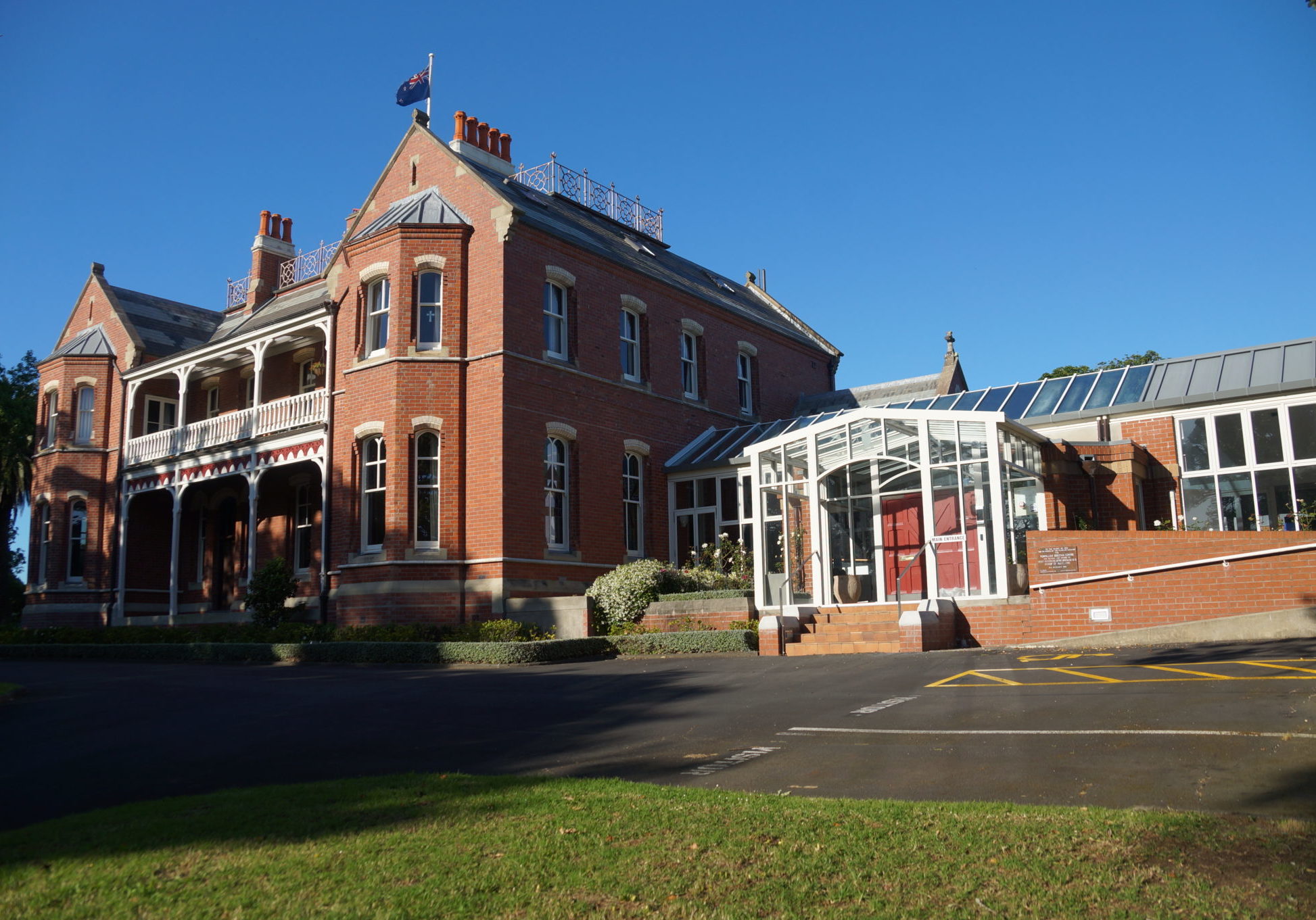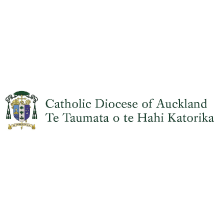
THE Catholic Diocese OF Auckland

A UNITED FRONT FOR THE CATHOLIC DIOCESE OF AUCKLAND
Established in 1848, the Catholic Diocese of Auckland (CDA) is one of six in New Zealand. While most people might be familiar with the CDA’s faith and purpose-driven mission work, a lot is going on behind the scenes to keep the wheels of this not-for-profit organisation running smoothly.
COVERING A LOT OF GROUND
Geographically, this multi-parish diocese covers the Far North right down to Thames. The CDA operates six entities and over 50 schools and 70 parishes, small and large, across its network. Alongside some commercial buildings, they make up a significant property portfolio.
The six entities – Catholic Diocese Auckland, Policy One, Auckland Common Fund Ltd, Catholic Education Services Board, Robert Ned Covich Charitable Trust and Liston Village Board Management – are responsible for the leadership and management of various parts of the organisation.
Policy One manages the funding received from the Ministry of Education for spending on existing property, major repairs, maintenance, and refurbishment projects across the CDA’s school network. The Auckland Common Fund Ltd collects attendance dues on behalf of the schools, and Liston Village Board Management is responsible for the Liston Retirement Village in Hillsborough, Auckland.
From the outside, the CDA’s asset-heavy, close to a billion-dollar balance sheet rivals the inner workings of any large organisation. However, as a not-for-profit, it relies heavily on donations, government funding and the work of many parishes and support services to maintain the faith and growth of their community.
SAME SYSTEMS FOR ALMOST TWO DECADES
Amit Prasad joined the CDA Finance team just over a year ago – right in the thick of COVID-19.
“Talk about going from a frying pan into the fire kind of scenario!” he laughs.
Previously, Amit worked as the University of Auckland’s Business School as Director of Finance for many years. Coming from an environment where cloud-based technology and online dashboards were used every day, it was more than just a new job Amit needed to wrap his head around. The CDA hadn’t upgraded its systems for the last 17 years, and this needed to change for many reasons, Amit says.
TOO MANY SYSTEMS NOT TALKING TO EACH OTHER
Six entities, multiple systems, lots of manual intervention
When Amit joined the CDA, he was faced with not one, not two, but multiple systems. They were all server-based, none of them integrated well, and when it came to reporting, there was no standardised format. For a complex organisation like the CDA, where each entity had its own reporting deadlines and requirements – things were all over the show.
“I had, on an annual basis, approximately 59 board and committee meeting-related packs that needed to be done. If you map that out on an annual timetable, that’s more than one a week,” Amit says.
Amit and his team were “basically chasing their tails every week”, using manual workarounds to extract data from systems that “effectively don’t talk to each other”. They lacked the time and resources to provide critical, high-level financial information the organisation needed for decision-making.
“We were constantly focusing on the production of board packs, which are historical reports of what has happened – not what is going to happen,” Amit adds.

MOVE FROM GREENTREE TO ADVANCED
Organisation upgrades existing MYOB system
When choosing a new system, Amit says the decision came down to three factors.
The system needed to be cloud-based, so the finance team could work from anywhere and still support the network’s stakeholders. Being a not-for-profit, the budget was limited but they also wanted to add customisations and integrations.
Finally, it had to manage the organisation’s many complexities including the variation between each entity’s tax requirements, user restrictions and financial reporting.
One of the many systems they’d been using was MYOB Greentree. Based on CDA’s requirements, it made sense to transition to MYOB Advanced.
“It was suggested to us by Verde, our existing business partner, that MYOB Advanced was the right option for our organisation…and so far, so good,” Amit says.
CONSOLIDATED, STREAMLINED, EFFICIENT
Six entities, one system, less manual intervention
Now that the CDA and all its entities are on the same system, business processes are simpler, streamlined and more efficient. It means that despite being small and lean, Amit’s team can focus on analysing the numbers – rather than manual data entry.
“This is an organisation that relies heavily on donations, bequests, government funding, and with the ongoing impact of COVID-19, that’s a challenge we can provide valuable information for when it comes to decision-making,” he says.
For day-to-day operations, Amit and his team have full visibility of all transactions across the organisation. They can easily access the data they need and consolidate it within one system – significantly reducing or eliminating previous manual workarounds.
“Things are a lot easier, a lot more transparent and people can get in and out of the system without any issues.”
“Probably 90% of what goes through accounts payable relates to our various construction projects. We have a lot more visibility of what things are falling due which helps us ensure we’re meeting our contractual obligations as well.”
IMPROVED - AND MORE ACCURATE - REPORTING CAPABILITY
The finance team used to spend a lot of time preparing reports for multiple board meetings. They’d pull data for each entity from various customer and supplier databases, then use customised Excel spreadsheets to consolidate their findings. It was an admin-heavy process that relied on manual data entry.
“We had different versions of balance sheets and profit and loss statements as to how they looked. Now, we can customise our reports within MYOB Advanced,” Amit says.
This has also minimised the risk that comes with a system subject to too many manual interventions, he adds.
“With MYOB Advanced we have one standard format across all our entities. As long as we’ve got the right data in, we’ve got the right level of output."
“There’s also a clear audit trail of changes…it’s not about looking over people’s shoulders, it’s about having a level of comfort that the system has a control element for what you want a financial system to do.”
While it’s still early days, Amit is confident that MYOB Advanced will help propel the organisation towards its long-term goals.
“I'd like to get to a point where some of our stakeholders go into a board meeting with a dashboard they can click on – rather than printing reports. [We’re] looking at it from a sustainability perspective long-term which aligns with our mission goals,” he says.
CONSOLIDATING MULTIPLE SYSTEMS WITH MYOB ADVANCED
✔️Cloud-based makes data more accessible✔️Consolidated system eliminates manual workarounds, reduces human error
✔️Business processes have been simplified, team more efficient
✔️Standardised reporting across all six entities despite business variations
✔️Room to grow – more modules and customisations to be added later
ABOUT THE CATHOLIC DIOCESE OF AUCKLAND
The Wilcox Group of Companies is involved with growing, packing and distributing fresh produce throughout New Zealand with facilities at Pukekohe, Ohakune, Levin and the Waikato in the North Island, and Rakaia in the South Island. Companies within the group are privately owned by the Wilcox family, who have been associated with vegetable growing since the early 1930s. They manage a production base of 2,500 acres with 110 permanent staff.Their large growing and packing capacity and specialised marketing skills mean Wilcox can deliver and maintain a guaranteed sustainable supply to retail sectors throughout New Zealand and sustain a significant export demand.
For more information visit A.S. Wilcox
Established in 1848, the Catholic Diocese of Auckland (CDA) is one of six in New Zealand. The CDA operates six entities and over 50 schools and 70 parishes, small and large, across its network. Alongside some commercial buildings, they make up a significant property portfolio.
For more information visit The Catholic Diocese of Auckland

